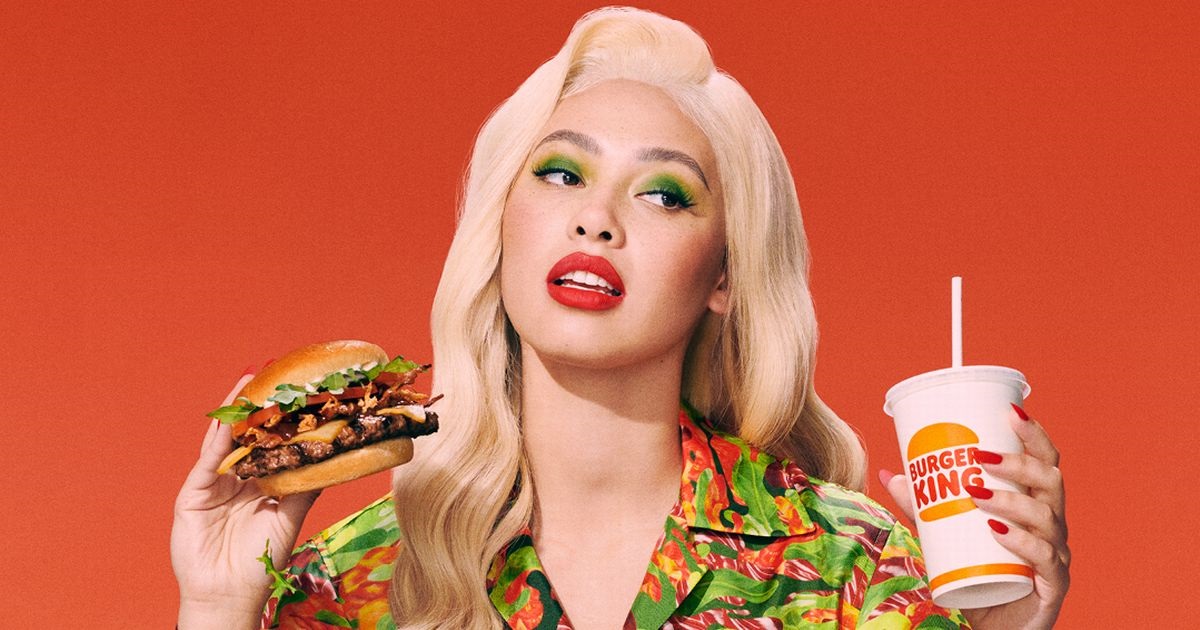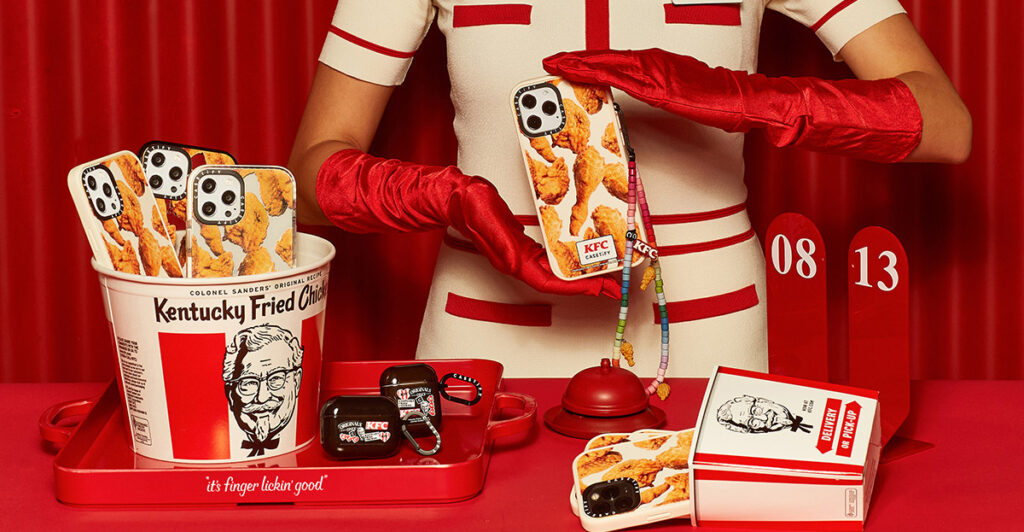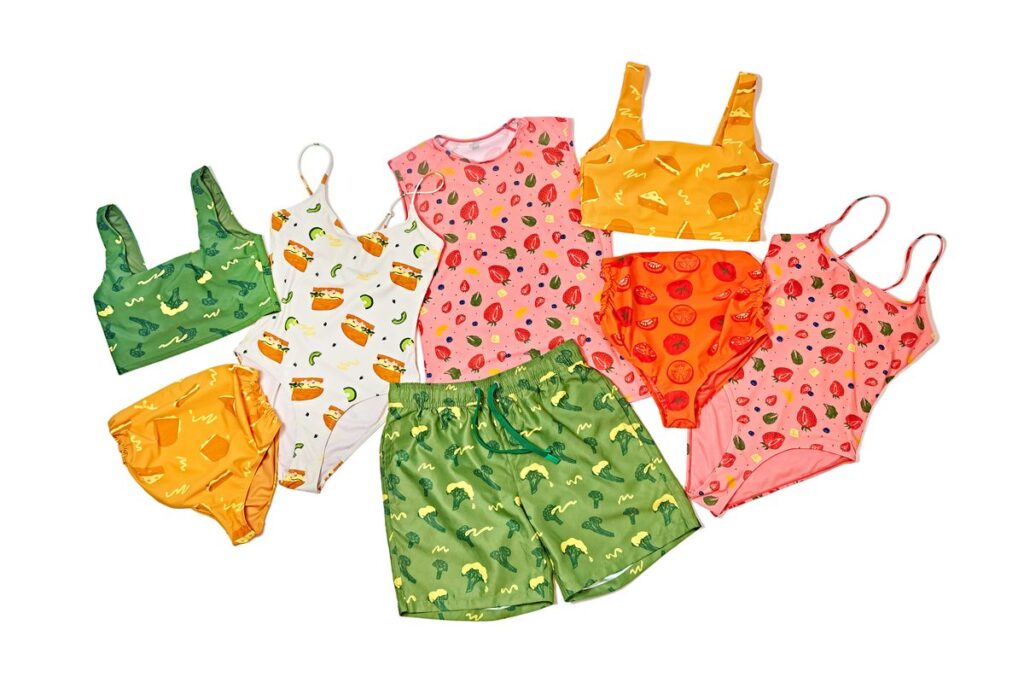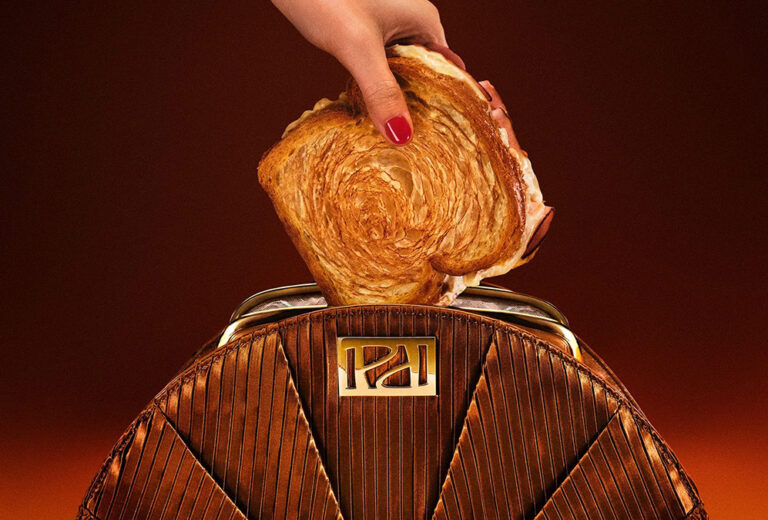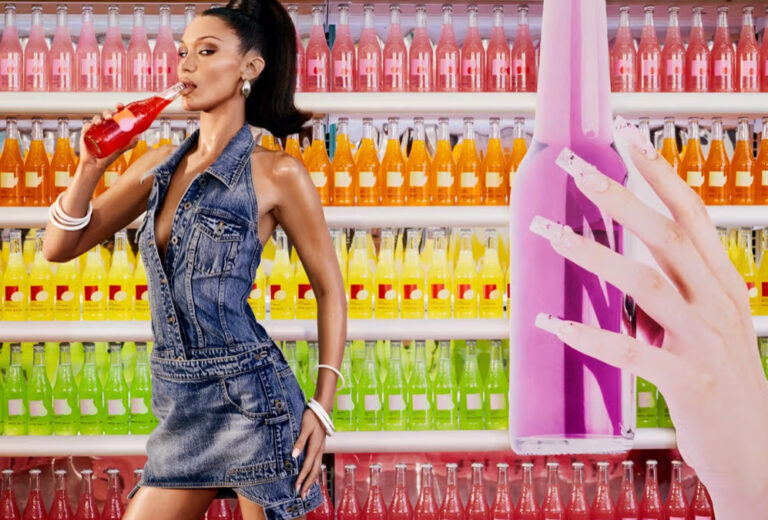Click here to read the Spanish version.
Edible fashion will always be a trend thanks to these designers or brands that turn food into haute couture pieces. A phenomenon that would have just glimpsed the Italian Rao’s Homemade, who recently reimagined its iconic sauce jars into limited edition luxury handbags.
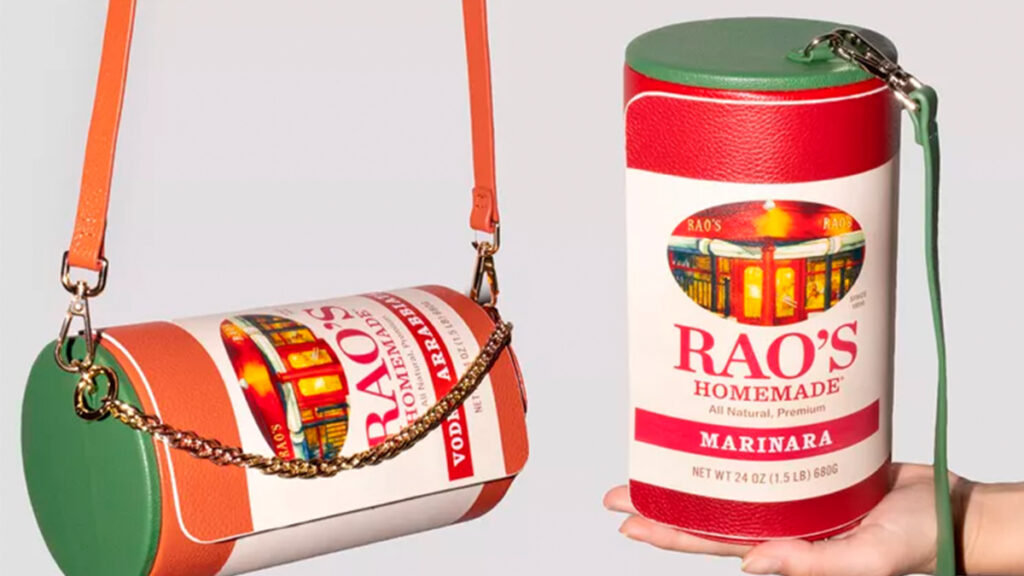
Beyond those tasty accessories, the reality is that the industry is constantly feeding us with products and campaigns. As McDonald’s did in March, teaming up with Chinese streetwear brand CLOT for its 20th anniversary to create a collection in which they reinterpreted the chain’s traditional uniform, merging the two identities into a single elevated fast-food concept. Thus, they presented some fusion pieces such as sweatshirts with Chinese symbols, commemorative bags, as well as knotted shirts with CLOT’s Silk Royale print and badges with the “M” representative of McDonalds.
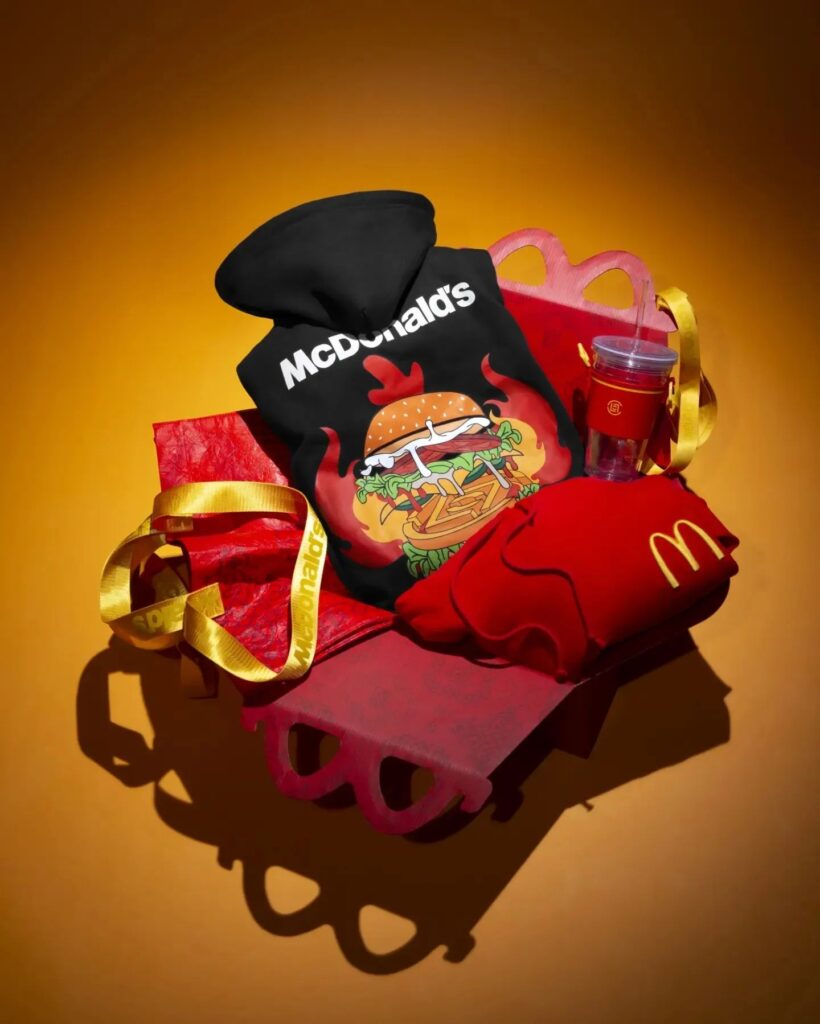
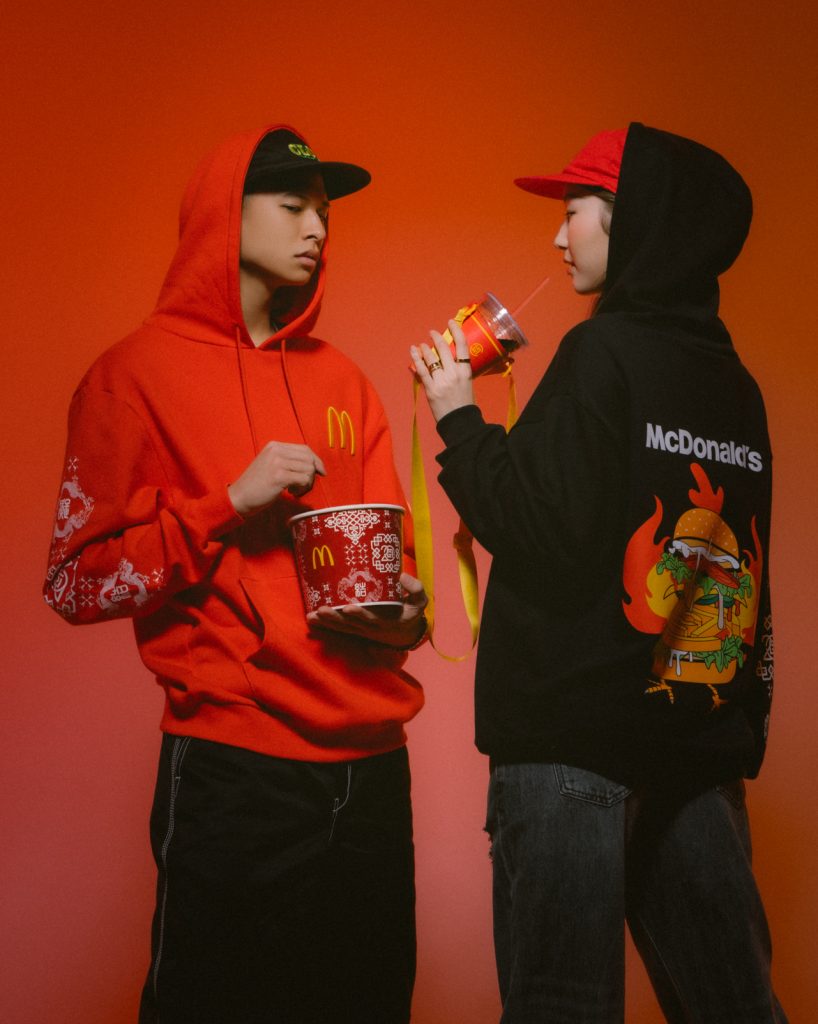
A CREATIVE SYNERGY
The inspiration of the fashion system in fast-food chains, and vice versa, seems to be infinite. This was demonstrated by Taco Bell and Pizza Hut, representing this latent trend that underlies a whole movement or phenomenon that connects with pop culture and the desire for escapism and frivolity projected by the global crises. Thus, the popularity of these products, rather than serving as a testament to the quality of the food sold by chain restaurants, speaks to the cultural moment and the type of relationships people establish with their franchises and food brands.
Back in 2020, the KFC x Crocs collaboration driven by nostalgic marketing led to the fried chicken chain’s distinctive codes being transferred to Crocs, and a pair of pendants that looked and smelled like fried chicken.
Other restaurants such as Panera, whose brand conveys an image of homely comfort, has ventured into the design field on several occasions, as it reflected with its ‘Swim Soups’ line of swimwear, inspired by the flavors of its hot soup in order to connect with the lives of its customers, so that they could reflect that mutual love for the brand. A connection that also materialized with its iconic BAGuette Panera launched in January: a bag that catered to a community of fashion fans on TikTok whose interests lay somewhere between the absurdity of Camp aesthetics and Y2K archival fashion. Panera’s foray into Generation Z fashion sold out in a matter of hours.
A CONNECTION WITH THE PAST AND THE PRESENT
Establishing new connections with customers becomes the mantra of all these fast food chains or restaurants, where much of their appeal lies in the advertising or the experiences attached to it, rather than the food itself. After all, the underlying effect of these marketing campaigns is nothing new. That impact was already glimpsed by brands like Coca-Cola in the 1980s, with its iconic logo sweatshirts that ended up representing a generation at the time. A powerful act that Zara recaptured in 2021 through a collaboration with the beverage brand inspired by the archive, and focused on Coca-Cola’s impact on mass culture.

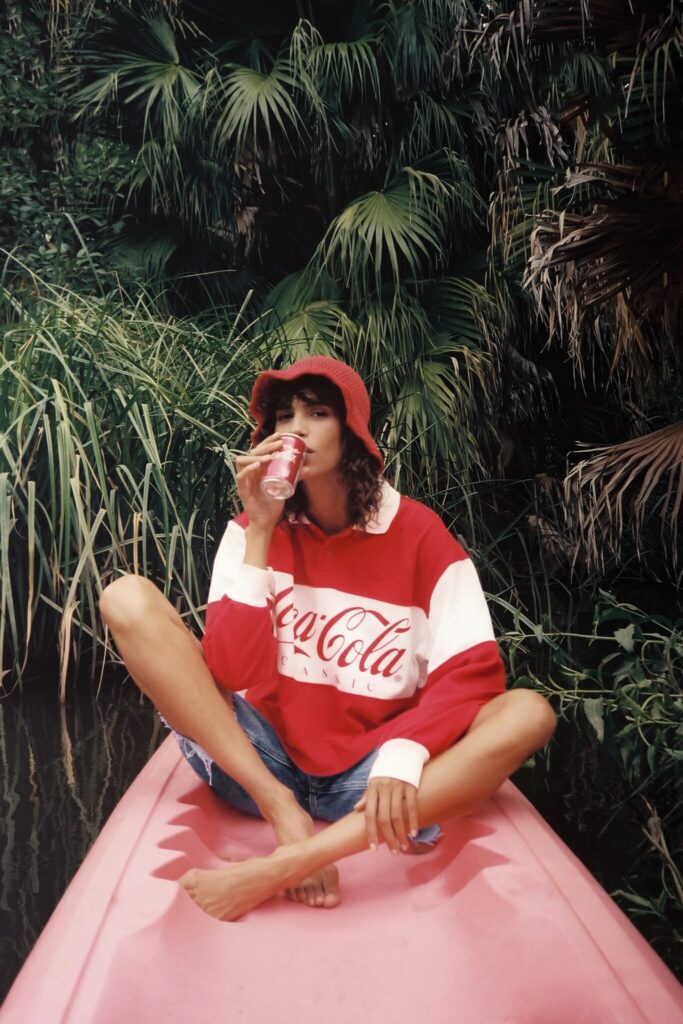
In this sense, if we continue to focus on the past, it is worth mentioning the can dresses that Campbell presented in the mid-70s. The ‘Souper’ ended up, like the cans themselves, being mass-produced, leading to people buying dozens of soup cans in order to make their own Andy Warhol-style dress at home.
The current splendor of fast-fashion is also linked to our chronic connection to the internet, and the way in which we advertise indirectly or covertly with the merchandising launched by all those food franchises or brands, reflecting once again that the product, in the end, is us.

